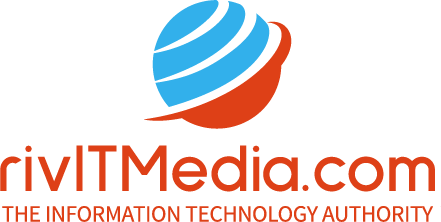Has your sensitive business data ever felt shaky in the face of increasing cyber threats and strict regulations? Whether you’re processing customer records, intellectual property, or payment data, a single slip can lead to reputation damage, financial loss, and hefty fines. That’s where Data Loss Prevention (DLP) comes in — it’s your defensive shield, turning uncertainty into confidence.
Protect Your Business’ Cybersecurity Now!
Protect your business from evolving cyber threats with our tailored cybersecurity solutions designed for companies of all sizes. From malware and phishing to ransomware protection, our multi-license packages ensure comprehensive security across all devices, keeping your sensitive data safe and your operations running smoothly. With advanced features like real-time threat monitoring, endpoint security, and secure data encryption, you can focus on growth while we handle your digital protection. **Request a free quote today** for affordable, scalable solutions and ensure your business stays secure and compliant. Don’t wait—get protected before threats strike!
What Is Data Loss Prevention (DLP)?
Data Loss Prevention (DLP) is a cybersecurity strategy combining technology, processes, and policies to identify, monitor, and prevent unauthorized access or leaks of sensitive data. This applies to data at rest (stored), in motion (transmitted), and in use (actively accessed).
DLP helps businesses:
- Detect and block unauthorized or accidental data transfers,
- Protect data across endpoints, networks, and cloud environments,
- Comply with regulations like GDPR, HIPAA, and CCPA.
Why Every Business Needs DLP
- Prevent Costly Data Breaches: The average data breach costs millions. One misstep could derail your business.
- Regulatory Compliance: Stay on the right side of GDPR, HIPAA, CCPA, and more—DLP is vital for meeting strict privacy mandates.
- Data Visibility: Gain clarity on who accesses data, when, and how. Visibility is the first step to control.
- Guard Against Insider and External Threats: Blocks not only external hackers but also unintentional leaks or malicious insider actions.
Types of DLP: Where It Operates
- Endpoint DLP (Data in Use) — Installed on devices to oversee activities like copying, printing, and saving sensitive files.
- Network DLP (Data in Motion) — Monitors outgoing traffic, emails, and uploads to block unauthorized data exfiltration.
- Cloud DLP — Secures data in SaaS, cloud storage, and collaboration platforms.
Best Practices for Implementing DLP
1. Identify & Classify Sensitive Data (“Crown Jewels”)
Start by inventorying and classifying data based on its importance (e.g., public, internal, confidential, restricted).
2. Define DLP Objectives & Policies
Set clear goals—like compliance or IP protection. Develop policies aligned to these goals and legal standards.
3. Design Phased Rollout (“Crawl, Walk, Run”)
Avoid overwhelming your team. Start small (e.g. one policy or department), learn, then scale.
4. Conduct Proof of Concept (PoC)
Test DLP tools in a controlled setting to assess performance, usability, and policy effectiveness.
5. Involve Stakeholders & Form a Committee
Include leadership, IT, legal, and business managers. Regularly review and adjust the DLP program as needed.
6. Encrypt & Control Access
Use encryption for data in motion and at rest. Implement role-based access, the principle of least privilege, and multi-factor authentication (MFA).
7. Monitor, Alert & Enforce Response
Set up real-time alerts for suspicious activity and ensure an incident response plan is in place.
8. Automate Where Possible
Automate classification, policy enforcement, monitoring, and alerting to reduce human error and increase efficiency.
9. Keep Systems Updated & Conduct Regular Audits
Patch vulnerabilities promptly and revisit DLP policies to adapt to new threats or business changes.
10. Educate & Train Your Team
Human error is a leading cause of data mishaps. Provide regular, clear training to ensure employees understand DLP processes and the importance of compliance.
Implementing DLP: A Summary Table
| Step | Action Items |
|---|---|
| 1. Data Discovery | Inventory and classify sensitive data |
| 2. Goal Setting | Define compliance and business objectives |
| 3. Pilot Deployment | Start small with PoC and phased rollout |
| 4. Stakeholder Involvement | Form a DLP committee and schedule periodic reviews |
| 5. Access Controls | Apply encryption, RBAC, and MFA |
| 6. Monitoring & Alerts | Implement real-time tracking and incident response |
| 7. Automation | Automate classification, detection, and response |
| 8. Updates & Audits | Patch regularly and audit policies |
| 9. Employee Training | Conduct ongoing, accessible education |
Real-World Success Scenario (Analogy)
Consider your business like a professional kitchen running a high-end restaurant. The “secret recipes” (intellectual property) must stay within the team; the orders (customer data), financials, and supply lists cannot leak out. DLP is the security guard—monitoring, tagging, encrypting, and ensuring only the right people see the right things at the right time. And just like a kitchen needs regular inventory check and staff training, a DLP program needs classification, audits, and ongoing learning to stay effective.
Conclusion
Data is at the heart of your business’s integrity and reputation. A robust DLP strategy isn’t a luxury—it’s essential for safeguarding your sensitive information, ensuring compliance, and maintaining operational resilience.
Take action today: Start by identifying your most sensitive data, then plan a phased DLP implementation tailored to your business. Want help getting started with policy templates or training materials? Just ask—I’m here to help.
Pair your DLP strategy with the powerful SpyHunter multi‑license solution to defend your endpoints against malware, ransomware, and spyware. It’s ideal for protecting multiple devices across your organization. Learn more and purchase here.
Protect Your Business’ Cybersecurity Now!
Protect your business from evolving cyber threats with our tailored cybersecurity solutions designed for companies of all sizes. From malware and phishing to ransomware protection, our multi-license packages ensure comprehensive security across all devices, keeping your sensitive data safe and your operations running smoothly. With advanced features like real-time threat monitoring, endpoint security, and secure data encryption, you can focus on growth while we handle your digital protection. **Request a free quote today** for affordable, scalable solutions and ensure your business stays secure and compliant. Don’t wait—get protected before threats strike!




